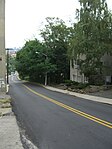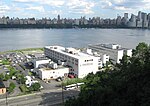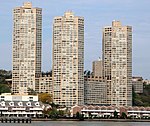North River (Hudson River)

North River is an alternative name for the southernmost portion of the Hudson River in the vicinity of New York City and northeastern New Jersey in the United States. The entire watercourse was known as the North River by the Dutch in the early seventeenth century; the term fell out of general use for most of the river's 300+ mile course during the early 1900s. However the name remains in very limited use as an artifact among history-inclined local mariners and others and on some nautical charts and maps. The term is also used for infrastructure on and under the river, such as the North River piers, North River Tunnels, and the North River Wastewater Treatment Plant. At different times "North River" has referred to: the entire Hudson the approximate 160-mile portion of the Hudson below its confluence with the Mohawk River, which is under tidal influence the portion of it running between Manhattan and New Jersey the length flowing between Lower Manhattan and Hudson County, New Jersey.Its history is strongly connected to shipping industry in the Port of New York and New Jersey, which shifted primarily to Port Newark in the mid-20th century due to the construction of the Holland Tunnel and other river crossings and the advent of containerization.The names for the lower portion of the river appear to have remained interchangeable for centuries. In 1909, two tunnels were under construction: one was called the North River Tunnels, the other, the Hudson Tubes. That year the Hudson–Fulton Celebration was held, commemorating Henry Hudson, the first European to record navigating the river, and Robert Fulton, the first man to use a paddle steamer in America, named the North River Steamboat, to sail up it, leading to controversy over what the waterway should be called.Much of the shoreline previously used for maritime, rail, and industrial activities has given way to recreational promenades and piers. On the Hudson Waterfront in New Jersey, the Hudson River Waterfront Walkway runs for about 18 miles. In Manhattan, the Hudson River Park runs from Battery Park to 59th Street.
Excerpt from the Wikipedia article North River (Hudson River) (License: CC BY-SA 3.0, Authors, Images).North River (Hudson River)
New York Manhattan
Geographical coordinates (GPS) Address Nearby Places Show on map
Geographical coordinates (GPS)
| Latitude | Longitude |
|---|---|
| N 40.786666666667 ° | E -73.991944444444 ° |
Address
Manhattan Community Board 7
New York, Manhattan
New York, United States
Open on Google Maps








